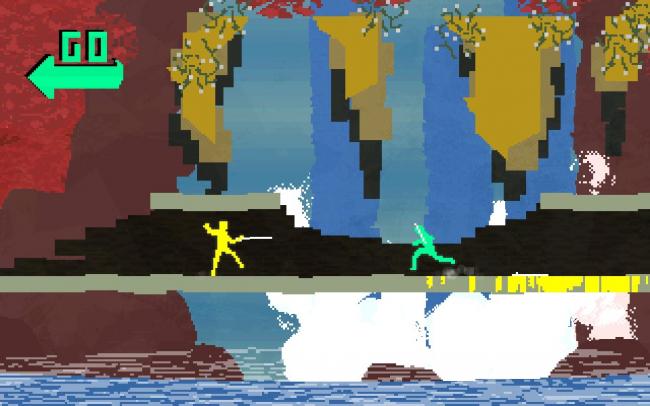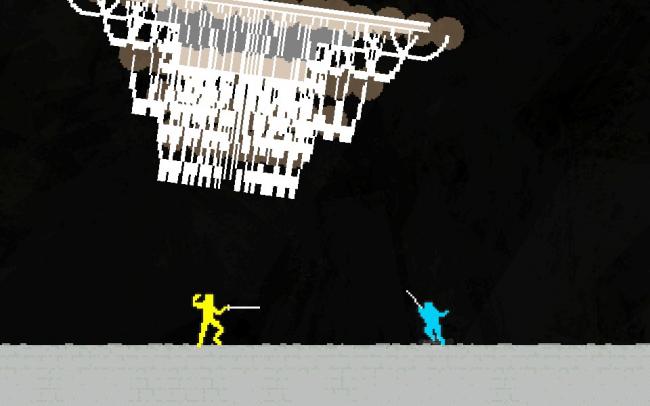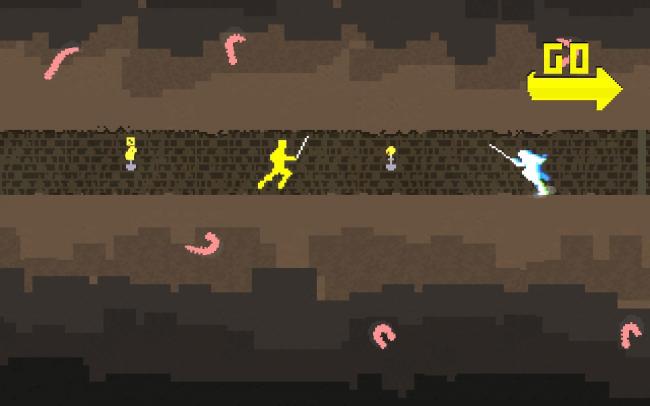- Wondering how to get Monopoly GO! free rolls? Well, you’ve come to the right place. In this guide, we provide you with a bunch of tips and tricks to get some free rolls for the hit new mobile game. We’ll …
Best Roblox Horror Games to Play Right Now – Updated Weekly
By Adele Wilson
Our Best Roblox Horror Games guide features the scariest and most creative experiences to play right now on the platform!The BEST Roblox Games of The Week – Games You Need To Play!
By Sho Roberts
Our feature shares our pick for the Best Roblox Games of the week! With our feature, we guarantee you'll find something new to play!Type Soul Clan Rarity Guide – All Legendary And Common Clans Listed!
By Nathan Ball
Wondering what your odds of rolling a particular Clan are? Wonder no more, with my handy Type Soul Clan Rarity guide.
Nidhogg Review
I had first heard about Nidhogg back in 2011 when it was the recipient of the very first Nuovo Award. Every year at the Independent Games Festival, one title manages to rise above the rest and win the Nuovo for being the best abstract, shortform, or unconventional game presented to the judges that year. With a medal like that hanging around its neck, you’d better believe that I had to get my hands on it.
…only I couldn’t.

Years passed, and as much as I wanted to try Nidhogg, the game remained an exhibition piece only. Friends and colleagues would go hands on at events and tell me how fantastic it was. I’d read articles that threw around terms like “perfect game.” But at the end of the day, it seemed like Nidhogg and I just weren’t meant to be.
That all changed today when developer Messhof unshackled their game from its exhibition-only chains, launching Nidhogg on Steam for the masses. And yes – it was very much worth the wait.

The most frantic sword fight you’ll ever be a part of
I had first heard about Nidhogg back in 2011 when it was the recipient of the very first Nuovo Award. Every year at the Independent Games Festival, one title manages to rise above the rest and win the Nuovo for being the best abstract, shortform, or unconventional game presented to the judges that year. With a medal like that hanging around its neck, you’d better believe that I had to get my hands on it.
…only I couldn’t.

Years passed, and as much as I wanted to try Nidhogg, the game remained an exhibition piece only. Friends and colleagues would go hands on at events and tell me how fantastic it was. I’d read articles that threw around terms like “perfect game.” But at the end of the day, it seemed like Nidhogg and I just weren’t meant to be.
That all changed today when developer Messhof unshackled their game from its exhibition-only chains, launching Nidhogg on Steam for the masses. And yes – it was very much worth the wait.
A game with a primarily multiplayer focus, Nidhogg pits two fencers against each other in a battle for territory. The goal of the game is to move your fencer forward until he reaches the finish line at the other end of the screen. One fencer is heading in one direction to accomplish this and the other is headed the opposite way. It’s like football, only much pointier.
Sword-fighting is fun and challenging, yet the controls are kept simple enough that they have a pick-up-and-play accessibility to them. It’s the sort of comfort you’d find walking up to a new arcade game for the first time back in the eighties. You’ll be able to move your sword into three positions before thrusting: top, center, and bottom. You’ll also be able to throw your weapon, do dropkicks, and – if you’ve lost your rapier – punch the other dude down to the ground and rip out his little pixelated heart.

Given the main objective, you might think that it would be all too easy to just ignore fighting and try to race to the other end of the stage before your opponent does. Nidhogg takes such thinking into consideration and, again like football, has a system to determine which player is in control of the field. And it’s a rather simple system, too. If you made the last kill, the momentum is moving in your direction (as indicated by a “GO” arrow at the top of the screen).
While the gameplay is vastly different, comparing Nidhogg to other 2D fighting games like Street Fighter wouldn’t be out of order. The game moves at a similarly frantic pace, and you’ll find yourself hesitating and back-stepping as you wait for the perfect opening, just like you might if you were looking to throw out a fresh hadoken.
In terms of stages, there are only four available in the final product. Luckily, they all play quite different from each other. In one stage you’ll be fighting througha mine with narrow passageways that make jumping over your opponent impossible. In another you’ll find yourself fighting in the sky: stay too long in one spot and the cloud beneath your feet will disappear. There’s even a stage where your fights will largely be blocked by wheat, making it impossible to see sword positions, forcing you to quite literally take a stab in the dark.
The stage designs also shine purely on presentation. This is the sort of game that proves there’s a lot that can be accomplished using a retro art-style. Nidhogg looks like something trapped between the Atari 2600 and the Commodore 64, but 1982 never saw anything as cool as this.

Playing against real people is where it’s at – especially with two of you scrunched together sharing the same keyboard – but Messhof has added a single player element in the game’s public release. This plays out exactly the same as the multiplayer does, but without the headache of trying to find a rival with a pulse. The AI offers plenty of challenge without being unfair, and gives you a great place to practice before going head-to-head with a real foe.
Of course, going head-to-head with a real foe is the ultimate goal here. The multiplayer comes in three flavors, though like the single player campaign, the only real difference is who you’ll be playing against. Offline and online are the obvious inclusions, but in a smart twist, Messhof has also included a tournament mode. This is an offline experience for up to 8 players, which turns Nidhogg into a perfect party game. I haven’t had a chance to play with that many folks myself, but considering how accessible the game is (and how exciting it is just to watch), I’m pretty sure there will be a Nidhogg party in my living room in the very near future. (Thank goodness the game also offers controller support – cramming two guests onto the same keyboard would just be weird!)
Much to my delight, Nidhogg delivers on exactly what it promises to be: a frantic sword-fighting game built entirely with multiplayer in mind. Thanks to its sharp AI the single player is a pretty great substitute, but let’s be clear: Nidhogg is a game best enjoyed with friends. If you have any, you should probably be buying this right now.

The good

The bad
More articles...
Monopoly GO! Free Rolls – Links For Free Dice
By Glen Fox
Wondering how to get Monopoly GO! free rolls? Well, you’ve come to the right place. In this guide, we provide you with a bunch of tips and tricks to get some free rolls for the hit new mobile game. We’ll …Best Roblox Horror Games to Play Right Now – Updated Weekly
By Adele Wilson
Our Best Roblox Horror Games guide features the scariest and most creative experiences to play right now on the platform!The BEST Roblox Games of The Week – Games You Need To Play!
By Sho Roberts
Our feature shares our pick for the Best Roblox Games of the week! With our feature, we guarantee you'll find something new to play!Type Soul Clan Rarity Guide – All Legendary And Common Clans Listed!
By Nathan Ball
Wondering what your odds of rolling a particular Clan are? Wonder no more, with my handy Type Soul Clan Rarity guide.







